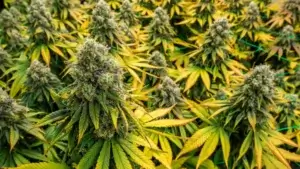Definition
A nug is a slang term used to describe a dense, well-formed piece of cannabis flower that is ready for consumption. It typically refers to high-quality buds with a strong aroma, visible trichomes, and minimal stems or leaves.
Purpose and Usage
Nugs are the most desirable part of the cannabis plant for consumers because they contain the highest concentration of cannabinoids and terpenes. They are used in various consumption methods, such as smoking, vaping, or making edibles. The term is often used to describe premium cannabis flower in dispensaries or among enthusiasts.
How It Relates to Cannabis
- Physical Characteristics:
- Compact, resinous, and often covered in trichomes (crystal-like structures containing cannabinoids).
- Vary in size but are typically larger than shake or trim.
- Bright green with orange or purple hues, depending on the strain.
- Role in Consumption:
- Broken apart or ground for use in joints, pipes, or vaporizers.
- The source of cannabinoids and terpenes, which provide the desired effects and flavors.
- Quality Indicators:
- Fresh, aromatic nugs with minimal stems and no seeds signify premium cannabis.
- Sticky texture and visible trichome coverage indicate high potency.
Common Misconceptions
Some believe the term “nug” applies to all cannabis flower, but it specifically refers to dense, high-quality buds. Another misconception is that nugs always indicate premium cannabis, though appearance alone is not a definitive measure of quality. Additionally, some think larger nugs are inherently better, but potency and freshness are more important factors.
Alternatives
- Bud: A synonymous term often used interchangeably with nug.
- Shake: Smaller, loose pieces of cannabis that accumulate during processing, less potent and flavorful than nugs.
- Popcorn Nugs: Smaller buds from the lower parts of the plant, often less visually appealing but still effective.
Importance of Nug
Nugs are the centerpiece of cannabis consumption, representing the highest quality portion of the plant. They are prized for their potency, flavor, and versatility, making them a staple for recreational and medicinal users alike. Understanding the term helps consumers identify and appreciate premium cannabis products.





